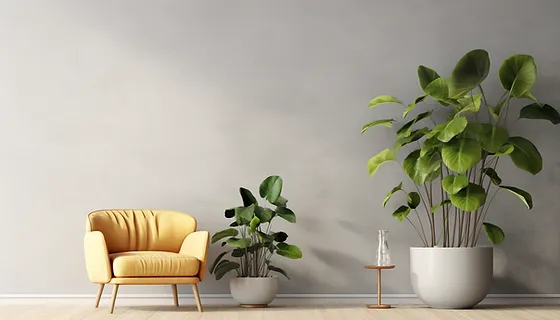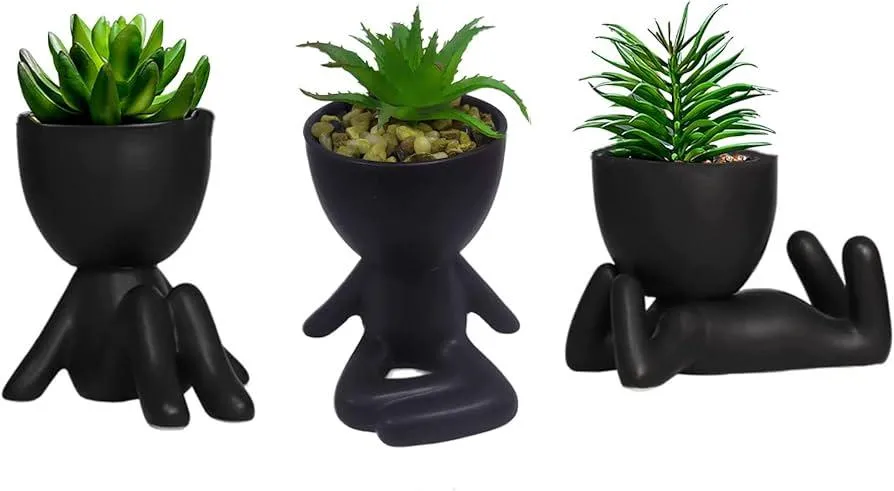The Best Plants for Decorating Your Home
Whether you’re looking to add some greenery indoors or spruce up your outdoor space, the right plants can really make your home feel more welcoming and comfortable. As someone who has experimented with various types of home décor plants over the years, let me share my top picks and tips for choosing plants that will thrive in your space.
Low-Maintenance Indoor Plants
Pothos
One of the easiest indoor plants to care for is pothos. This trailing vine can grow in low or bright light and does not require much water. Its heart-shaped leaves come in various colors like green, variegated, and golden. You can let it cascade down shelves or mount it on a moss pole where it will vine upwards and produce long stems. From my experience, pothos is practically impossible to kill – it’s survived periods of neglect when I’ve been away!
Snake plant
Equally resilient is the snake plant. With long, sword-like leaves in stripes of creamy white and grayish-green, snake plants add architectural interest to any room. They can go longer between waterings than most other houseplants and tolerate low light conditions. The toxins in their leaves also help purify indoor air by removing harmful chemicals. I’ve got snake plants all over my home that have been going strong for years with minimal care.
ZZ plant
Another great air-purifying plant is the ZZ plant. Its waxy dark green leaves emerge in dense upright spiral formations. ZZ plants are super low maintenance and can handle a range of lighting situations, from bright indirect sunlight to very low light. They’ll let you know if they’re needing water as their leaves will start to droop – then a good soak restores them. I find ZZ plants sort of remind me of those moss covered boulders you see in nature, very earthy and durable.
Brightening Up With Blooms
While the above plants flourish without flowers, here are some top performers for adding seasonal color indoors:
Peperomia
With its beautiful rounded leaves that come in various patterns like stripes and dots, peperomia is basically a mini-rainforest in a pot. Some varieties even produce long stems of tiny red or pink blooms. I have peperomia all around my kitchen for an extra dash of tropical vibes. They prefer medium to bright light.
African violets
These cute plants feature rosettes of heart-shaped foliage topped with cheerful blooms in colors like pink, purple, and white. Keep African violets in medium light and make sure their soil stays slightly moist. Apparently you’re supposed to talk to them too for best results – does that actually work? I dunno, but it seems to make folks feel closer to their plants I guess.

Orchids
Adding a splash of elegant blooms, orchids behave well as home décor plants if cared for properly. Give them a fast-draining pot, partial shade, and allow the growing medium to dry out between waterings. Orchid blooms can last for months, basically making them the Beyoncé of houseplants if you ask me! Just don’t overwater them – there’s nothing sadder than a mushy orchid.
Easy Outdoor Options
Now let’s move outdoors where the possibilities are limitless! Here are some top low-maintenance choices for patios, decks and landscaping:
Succulents
With their interesting shapes and vivid hues, succulents add instant curb appeal. They store water in their thick fleshy leaves or stems, so need sunshine and infrequent water. You can plant them together in containers, hanging baskets or as groundcover. Honestly succulents are too cool – have you seen the huge variety of weird and wonderful textures and colors? They seem almost alien like something you’d find on another planet.
Lavender
As an herb, lavender features fragrant gray-green foliage and spikes of purple flowers beloved by butterflies and bees. It thrives in full sun and well-drained soil, multiplying over the years to form beautiful mounded bushes. When I plant lavender, the sweet aroma always takes me back to holidays in the south of France surrounded by those gorgeous fields of blooms. Swoon!
Hostas
Providing texture with their wide, low-growing leaves appearing in patterns like golden stripes or blue-gray variegation, hostas pair well with other flower and shrub varieties in shady yards and borders. Their leaves emerge in springtime with colors that deepen as summer wears on. Hostas make cool accents near seating areas too.
How to Care For Your Home Decor Plants
Now that you’ve selected some new greenery to liven up your space, follow these tips for keeping them happy and healthy:
- Water just enough to moisten the soil without saturating it. Stick your finger in to check moisture levels before watering.
- Apply a balanced houseplant fertilizer during the spring and summer growing seasons.
- Repot houseplants that have outgrown their containers, using a potting mix formulated for indoor plants.
- Prune off any dead or damaged leaves or stems to maintain an attractive appearance.
- Rotate plant positions weekly so all sides receive indirect sunlight evenly.
- Wipe leaves periodically with a damp cloth to remove dust.
- Bring containers indoors before frost or protect tender plants outside with mulch.
With a bit of TLC, your new plants will thrive for years of natural beauty in your space. Just don’t forget to stop and smell the flowers every now and then! Gardens and greenery have been scientifically proven to reduce stress and boost mood.

Plant Pest and Disease Prevention
No plant collection is completely immune to occasional problems. Here are some common issues and how to nip them in the bud:
Mealybugs
These fluffy white pests suck plant juices and secrete sticky honeydew, leading to sooty mold. Isolate infected plants and wash off insects with a cotton ball dipped in rubbing alcohol. As a preventative, spray neem oil which disturbs mealybug reproduction cycles.
Aphids
Tiny green or black soft-bodied insects cluster on new growth. I swear sometimes aphids just appear out of nowhere! Spray them off with a strong jet of water or use insecticidal soap. Ladybugs released nearby will feed on aphid colonies if you want to go the natural route.
Fungal diseases
Too much moisture trapped against foliage by poor air circulation can trigger molds like powdery mildew. Improve ventilation, trim away affected areas, and apply a systemic fungicide like Captan if issues persist. Prevention through good care practices is always the goal.
Pests outdoors
Similar strategies work on garden plant invaders. Check carefully for insect larvae, mites or signs of disease at least weekly. Act promptly before major damage occurs. Healthy, well-placed plants also withstand problems better than weak or stressed specimens. A little tender loving care goes a long way!
So in summary, with some plant selection know-how and routine care, greenery can massively improve your indoor and outdoor spaces while enhancing your mood and well-being. Let me know if you have any other planty questions!
Factors To Consider When Choosing Indoor Decoration Plants
| Plant | Light Needs | Water Needs | Size |
|---|---|---|---|
| Chinese Evergreen | Low | Allow soil to dry slightly between waterings | 3-6 feet tall and wide |
| Peace Lily | Medium | Water when top 1 inch of soil is dry | 1-2 feet tall |
| Pothos | Low | Water when top 1 inch of soil is dry | Trailing vines up to 10 feet long |
| Snake Plant | Low | Allow soil to dry completely between waterings | 2-4 feet tall with stiff leaves |
| ZZ Plant | Low | Water when top 1 inch of soil is dry | 1-3 feet tall with thick glossy leaves |
FAQ
-
What types of plants thrive best indoors?
Plants like pothos, snake plants, and peace lilies can tolerate lower light conditions and don’t need a ton of care. These kinds of plants will basically thrive even if you forget to water them sometimes. Spider plants are another good option – they’re pretty tough and the little babies you get on the ends are amazing.

-
How often should I water indoor plants?
It depends on the plant, but as a general rule, most indoor plants need water around once a week. Stick your finger in the soil and if the top inch is dry, it’s time to give them a drink. However, plants like ferns and English ivy may need water twice a week. At the same time, plants like cacti and succulents only need a sip every couple of weeks. The key is paying attention to each plant’s individual needs.
-
What’s the best potting mix for indoor plants?
A nice well-draining potting mix allows water to enter the soil and drain out easily so the roots don’t sit in wet stuff. Most indoor plant potting mixes contain ingredients like peat moss or coco coir to retain moisture along with perlite or vermiculite for drainage. A generic indoor plant potting soil from the store will work fine for most any plant. You can also put together your own mix using these basic components.
-
How often should I repot indoor plants?
As a general guideline, check the root ball and repot annually or when new growth slows dramatically. Signs the plant may need a larger pot include circling roots trying to escape the bottom drainage holes. The new roots indicate it’s time for more root space. pot. Whenever switching to a bigger container, be sure it only has one to two inches more width than the previous pot. Repotting too large can cause issues with overwatering.
-
What’s the best way to display indoor plants in my home?
Plants can be displayed in many different ways to bring nature inside. Place them on tables, in the kitchen window, or on a plant stand to add visual appeal to any room. Hanging baskets or wall planters with trailing vines also liven things up. Why not experiment with an exciting pot collection too? Maybe try a fanciful terra-cotta arrangement or a dramatic macrame hanger. It’s all about finding styles that suit your space and personality. Creativity is key – the possibilities are endless!
-
Why do some of my indoor plant leaves look sad?
Plants can have a lot of issues – too much sun, not enough water, overly wet soil, pests, and so on. Most often, droopy or yellowing leaves mean the plant is stressed. Check that it’s getting the right conditions for light, water, and nutrients. Possibly the pot is too small as well. Sometimes relocating a struggling plant or pruning off sickly parts can do wonders. With a little TLC, many indoor plants can bounce back to full health.
-
Are there any indoor plants that are toxic to pets?
While many household plants are non-toxic, some can pose a danger if cats or dogs chew on them. Lilies, for example, can seemingly be awesome but cause kidney failure in pets who taste them. Certain succulents also appear pretty yet contain toxic sap. It’s best to keep questionable plants out of paws’ reach or choose varieties labeled 100% non-poisonous if small kids or animals are around. A call to the local vet or online search can help ID any risks.
-
What can I do if an indoor plant gets bugs?
Unfortunately, pests of all kinds seem to enjoy munching on houseplants too. Mealybugs, spider mites, and scale insects are fairly common. Don’t panic though – with the right treatment, you can usually save the plant. Isolate it from others at first. Then spray down both the plant and soil with a insecticidal soap or neem oil, following directions closely. Repeating every few days may be vital to getting rid of persistent bugs. It takes persistence, but your green friend can recover!

